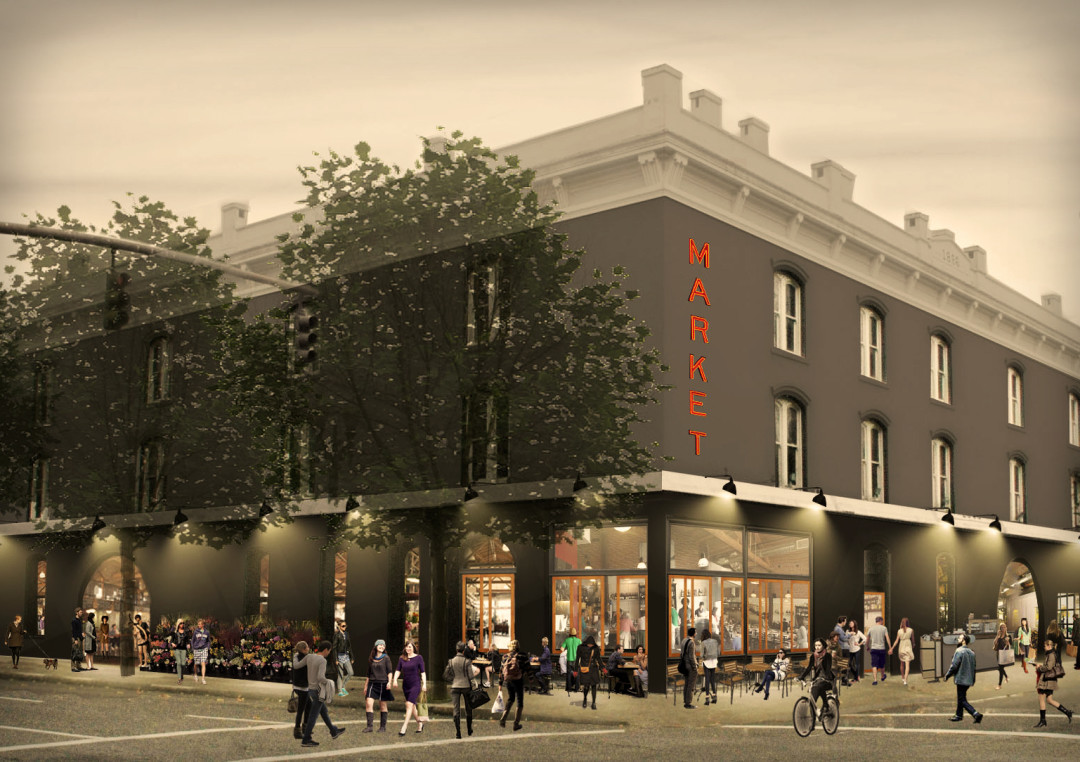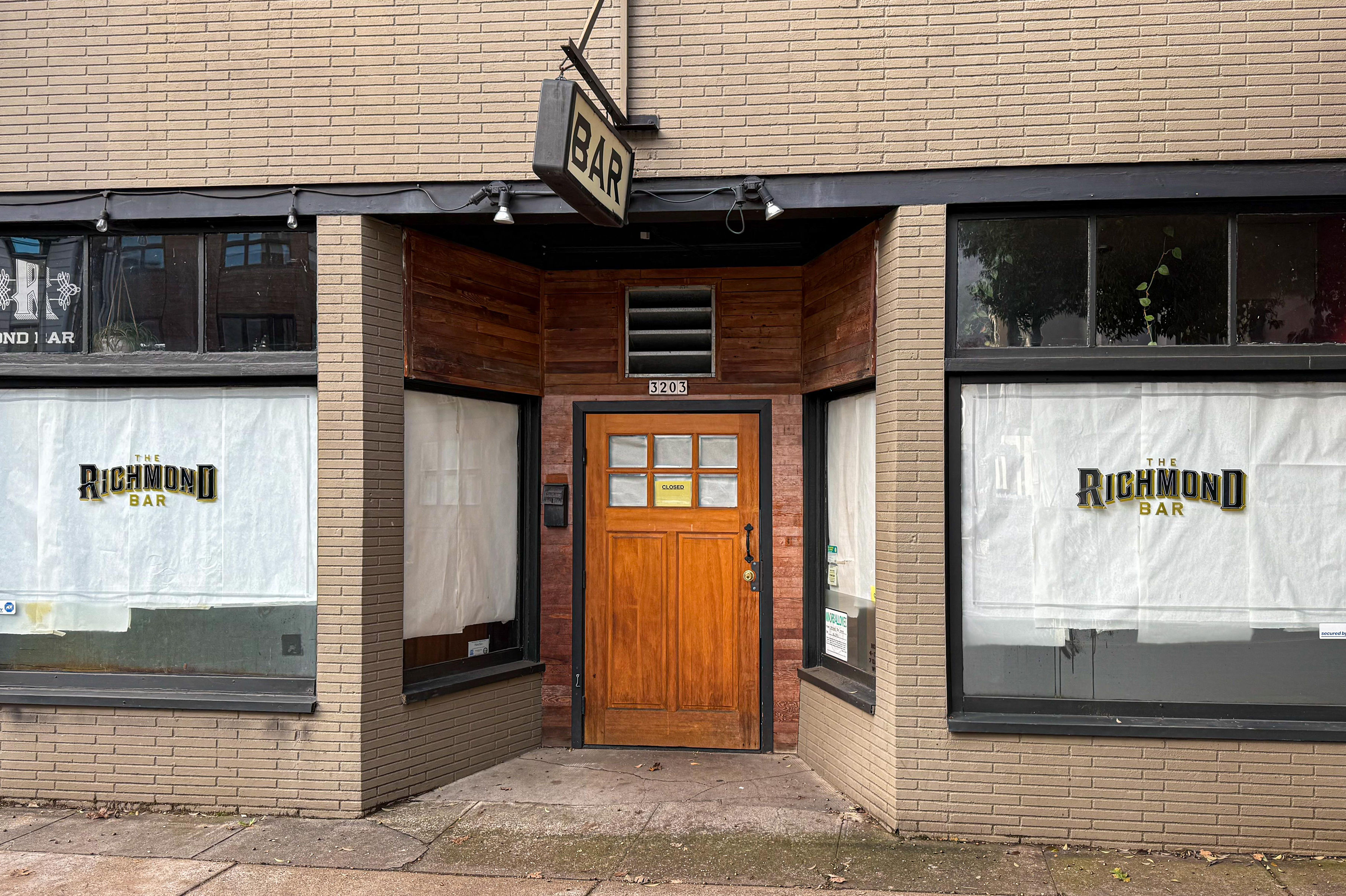Inside Portland’s First Food Hall, Pine Street Market

Pine Street Market, courtesy of Siteworks
Food halls are the country’s next big food crush. (Just don’t call ‘em food courts.) Bon Appetit plopped one from Los Angeles right on its Best New Restaurants list. The New York Times has a crush on projects that replace generic stir-fries and pudgy cinnamon rolls with cult-worthy ramen and serious tapas. Portland is getting ready to join the movement this fall. That’s when Pine Street Market plans to open an indoor, experimental food-and-drink pod occupying the entire ground floor at 133 SW Pine St., blocks away from the waterfront and the upcoming James Beard Public Market. The project is part of a revamp of the historic 1886 Baggage and Carriage Building which has housed horses, the Old Spaghetti Factory, and the legendary underage Quest nightclub in its eclectic history. The Portland Business Journal puts the renovation tag at $5 million, which includes two floors of creative office space. The ambitious and suddenly surging design-build firm Siteworks is at the helm.
Pine Street Market is modeled after successful urban food halls in Oslo, San Francisco, Seattle, Madrid, Copenhagen and New York. Most mix star power and up-and-comers attracted to an opportunity that offers more infrastructural benefits than a food cart, but demands less investment than a full restaurant. In a city that loves incubators of all kinds, I’d expect a successful launch at Pine Street to seed a crop of unexpected food halls.
Eat Beat gleaned the first details from “culinary curator” Mike Thelin, co-founder of Feast Portland and a national culinary consultant on projects in New York, Texas, and Oregon.
Why are food halls suddenly the rage?
Food halls aren't so much a new thing, in that you see them in Europe, Japan, and all over the world. Here in America, they are another sign of an urban and culinary renaissance that’s happened over the past decade. More people are choosing to live and work in the urban core rather than the ‘burbs, and increasingly, they demand great food options. This is clear in the evolution of food amenities we've seen in Portland and all over the country—from food carts to pop-ups to the impressive number of sandwich shops, falafel stands, and cocktail bars that now call Portland home. Like great restaurant streets and neighborhoods (think SE Division, NE Killingsworth and 30th, 28th Ave, Old Salt Marketplace, the Ocean on NE Glisan), food businesses and restaurants do well when in close proximity to each other, where they can benefit from being part of a destination. Food halls embody all of these things.
Help us envision the look and feel of Pine Street Market’s open food court.
There will be 6 or 7 tenants, each with their own look and feel, unique space, and even their own seating, but they will also be able to benefit from shared amenities such as communal seating, shared restrooms, and some shared infrastructure. So imagine a place where you can go for coffee in the morning, juice in the afternoon, enjoy multiple lunch options, a beer bar and maybe an oyster/cocktail bar. There is a lot of flexibility for the restaurants to get creative within their spaces.
How will Pine Street Market fit with – or differ from – the James Beard Public Market nearby?
The James Beard Market will be a region-defining market hall that, like Pine Street Market, contains food vendors—but it will also house a whole lot more: grocery, artisans, education, etc. Pine Street Market is born from the same spirit, but the Beard Market will be more Portland's version of Seattle’s Pike Street Market. This project is more like Portland's version of Seattle’s Melrose Market: smaller, more intimate, more neighborhood oriented. We're looking forward to being neighbors and no one has been more encouraging to this project than the Beard Market’s executive director Ron Paul.
Can you reveal any tenants yet? Seattle’s Melrose Market has the beautifully situated Sitka & Spruce in the corner, and New York’s Gotham West Market recruited Toyko cult favorite Ivan Ramen. Are you hoping to land a big-name anchor or a high-profile chef?
Not yet, but there will be several high-caliber anchor tenants.
Who is the imagined audience and how does this guide the food vision?
Pine Street Market is located in a part of downtown that's about to see some big growth, from new apartments to new office tenants to a brand new boutique hotel just a few blocks to the south—and it's already only a few blocks from lots of office workers (Big Pink is only three blocks away.) So the core of the tenant mix will serve the daytime population, but we expect Pine Street Market to be a big nighttime destination as well. What's more, this part of the city sees a lot of tourists already. This neighborhood has a lot of character and history, and Pine Street Market will be a watershed development.
What do you hope Pine Street Market food hall will do for a section of downtown that is still struggling to find an identity?
Pine Street Market will provide an option that currently doesn't exist for sure, but there are actually some pretty successful restaurants within a block or two. Stumptown's flagship location on Southwest Third is one block away, and Portland's ultimate power brunch spot (and my favorite) the Bijou Cafe is 30 seconds by foot. And regardless of your opinion of Voodoo Doughnut, it is one of the biggest tourist draws in the city. That's only a few blocks away. That said, Pine Street Market will provide a new destination in one of Portland's most historic neighborhoods.
How did you end up with the enviable job of “project culinary curator” at a Portland food hall?
The developers are my friend Jean Pierre Veillet, Dave Davies and Rob Brewster. Jean Pierre's firm Siteworks has done all sorts of great food-related projects, from Hopworks to Genoa to Hiroshi back in the day (he’s also in charge of design for the new, high-profile World of Speed Museum in Wilsonville.) Dave (Siteworks’ Vice President of Development) is an investor/partner in this project. Rob is based in Seattle, but does of lot of great work in Portland, Seattle and elsewhere. Last year they purchased the Carriage and Baggage Building to transform it into a creative office space for the upper floors. Instead of a more traditional retail concept, Jean Pierre was really taken with the idea of doing a food hall and asked me to help him put the project together. I’m working on a similar project in San Antonio. Given my experience in the food world, it was a perfect fit. They are a great group of developers: really smart, great at design, and excited to do something different. I had the food knowledge. Win win.




